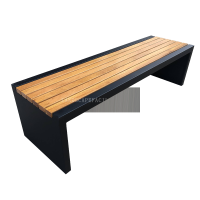Welcome to the website for landscape facilities products and knowledge.
How does the trash can design accommodate the disposal of hazardous materials?
The disposal of hazardous materials requires specialized trash can designs to ensure safety, environmental protection, and compliance with regulations. Modern hazardous waste bins incorporate several key features to address these challenges effectively.
1. Material Durability: Hazardous waste containers are typically made from high-density polyethylene (HDPE) or stainless steel to resist corrosion and chemical reactions. These materials prevent leaks and degradation when storing toxic or reactive substances.
2. Secure Lids and Locking Mechanisms: To prevent accidental exposure, these bins often feature tight-sealing lids, sometimes with locking systems. This design minimizes spills and restricts access to unauthorized individuals, especially important in households with children or public spaces.
3. Color-Coding and Labeling: Standardized colors (e.g., red for biohazards, yellow for radioactive waste) and clear labels help users identify the correct disposal method. This reduces cross-contamination risks and ensures proper segregation.
4. Inner Liners and Leak-Proof Bases: Many hazardous waste bins include removable liners made of puncture-resistant materials. Additionally, leak-proof bases or secondary containment layers provide extra protection against seepage.
5. Ventilation and Specialized Compartments: For volatile or flammable materials, some designs incorporate ventilation to prevent gas buildup. Others feature separate compartments to isolate incompatible chemicals (e.g., acids and bases).
6. Smart Technology Integration: Advanced models may include sensors to monitor fill levels, temperature, or chemical leaks, alerting users when maintenance or professional disposal is required.
By combining these features, modern trash cans for hazardous materials balance user safety, environmental responsibility, and regulatory compliance. Whether in laboratories, hospitals, or homes, thoughtful design mitigates risks associated with disposing of batteries, medical waste, solvents, and other dangerous items. Future innovations may focus on biodegradable materials and AI-driven hazard detection to further enhance safety.
Related search:

Recommendation
Modern Stainless Steel Begonia Wood Park Chair Outdoor Courtyard Leisure Sun Protection Bench Long Seat